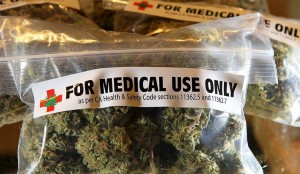
by admin | Feb 5, 2015 | Conditions, In the News, Medical Marijuana, The Facts
The use of cannabis for medical purposes should not rely on clinical trial results, according to a University of Melbourne academic.
Professor David Pennington said a number of upcoming trials in New South Wales presume cannabis can be regulated as a pharmaceutical substance.

by admin | Feb 5, 2015 | Conditions, In the News, Medical Marijuana, The Facts
To date one small survey of 128 people who used cannabis medicinally has been undertaken in Australia (Swift et al. 2005).2 Its results are largely consistent with similar surveys undertaken overseas (though some international research notes patients using cannabis for further conditions or symptoms than those listed below). The conditions or symptoms for which it was used by these 128 people are presented in table 1. Most respondents used cannabis for multiple conditions or symptoms.
Table 1: Conditions/symptoms treated with cannabis
Condition/symptom
%
Depression
56
Chronic pain
57
Arthritis
35
Migraine
17
Weight loss
26
Persistent nausea
27
Spinal cord injury
13
Spasms (spasticity)
16
Fibromyalgia
13
Wasting
11
ME (chronic fatigue)
13
Neuralgia/neuropathy
12
HIV/AIDS
8
Multiple sclerosis
7
Cancer
4
Other neurological disorder
6
Glaucoma
2
PTSD
<1
Irritable bowel syndrome
<1
Source: Swift et al (2005)
The survey found that use was typically long-term and regular. Many respondents had previously or were continuing to use cannabis non-medicinally, and some had discovered its therapeutic effects from their non-medicinal use. Others had tried cannabis at the suggestion of friends or doctors. Most respondents had tried various routes of administration, but reported typically smoking the cannabis. Although many reported
2 The authors note two other unpublished surveys undertaken which were not available.
7
concerns with smoking, particularly with its respiratory effects, smoking was preferred due its quick effect, allowing self-titration of dose, as well as cost considerations.
There was a high level of satisfaction among the sample with the effects of cannabis in relation to the condition or symptom for which it was being used. About two-thirds (62%) of respondents reported reducing or ceasing use of other medication after starting to use cannabis. This finding is consistent with international surveys, which also reveal high rates of patient satisfaction (Ogborne et al. 2000, Grotenhermen and Schnelle 2003, Ware et al.
2005, Reiman 2007, Aggarwal et al. 2013, Walsh et al. 2013). Many of these surveys may be skewed towards patients who have chosen to continue using medicinal cannabis, and of course these self-reported patient perceptions provide no evidence of efficacy. However, these surveys have been considered evidence of good toleration of medical cannabis among many patients.

by admin | Feb 4, 2015 | Conditions, History, In the News, Medical Marijuana, Natural vs Chemical, The Facts
Ten health problems that can be treated with the right variety of cannabis
Unfortunately, medical cannabis has no legal status in Australia, so if you wish to enjoy the well-studied benefits of this plant for the treatment of a large number of diseases and conditions, there is no choice but to medicate yourself. In order to do this, you have two options: you may go to a good supplier (illegal courageous private cannabis cultivators) or grow it yourself. In both cases, you should know the differences between the two main species of psychoactive Cannabis – Sativa and Indica- to choose the one that best suits your problem.
Indica varieties (medium to high THC content, content in CBD comparatively high), usually have a sedative psychoactive effect along with a feeling of being “stoned”. It relaxes body and mind, reducing muscle tension.
These qualities make it more suitable for diseases such as:
-Multiple-Sclerosis (it reduces spasms and tremors)
-Parkinson’s disease (same)
-Arthritis and rheumatism (it fights inflammation and stiffness)
-Insomnia (given its relaxing effects)
-Anxiety (same)
Sativa varieties (medium to high THC content, content in CBD comparatively low) produce a more active and euphoric effect. It is a both physical and mental “high” that tends to stimulate rather than sedate.
These varieties are more effective in treating medical problems such as:
-Nausea and vomiting caused by chemotherapy or AIDS medication
-Loss of appetite (it distends the stomach and stimulates hunger)
-Migraine (it reduces or completely eliminates the pain)
-Clinical Depression (it produces psychic well-being and a sense of euphoria)
-Chronic pain (analgesic properties). For this disorder Indica also works, so hybrid varieties could be very suitable.
These hybrid varieties are interesting for certain cases, because the combination of Sativa and Indica soothes their edges, generating a reduced psychoactivity and therefore a softer “high”. On the other hand, their beneficial effects may also be reduced, so they do not always work as the pure varieties.
Nevertheless, you may also choose to combine both varieties depending of their effects on your daily lives. It is best to use Sativa varieties during the day, for their stimulant action will keep you awake and alert to develop your normal activities, whereas Indicas are good for night-time, because their relaxing effects contribute to relaxation and sleep.
Nowadays, countless varieties with high CBD content are being developed with the purpose of benefiting from the medical properties of cannabis in the future without “getting high”. For example, the CBD CREW group, in collaboration with DINAFEM, has created two new hybrid varieties, rich in CBD, which are very valued among cannabis consumers. Always trying to achieve the CBD-THC 1:1 ratio, they will be marketed this coming February in countries allowing the sale of medical marijuana unfortunately Australia is not one of those liberal minded countries.
Whichever you choose, you can rest easy. Despite the absurd official condemnation of this blessed plant and regardless of all efforts made to demonstrate their “dangerousness,” no one has yet been able to discover the lethal dose of cannabis.




Recent Comments